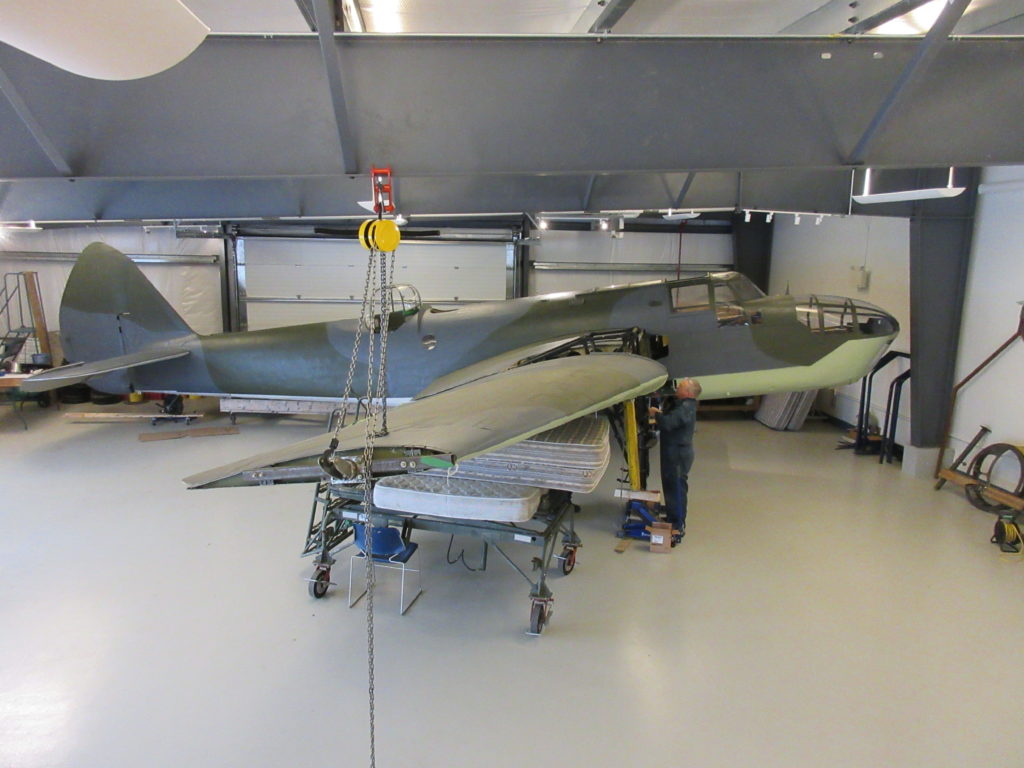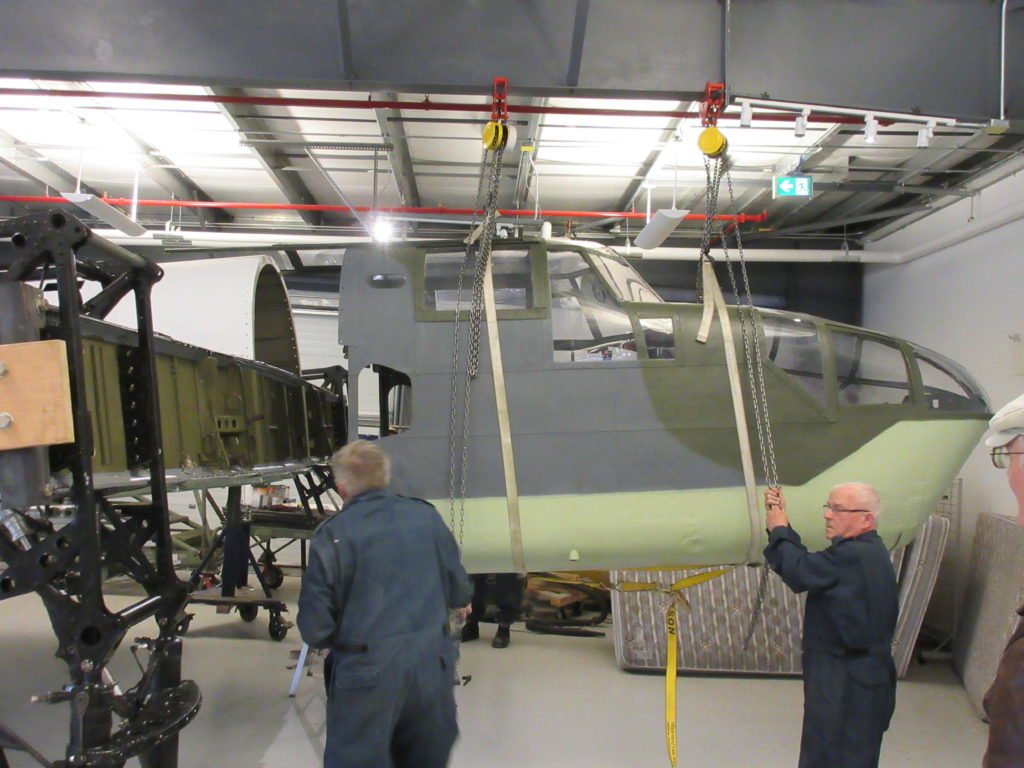Estimated reading time 5 minutes, 5 seconds.
After 10 years, a major milestone has been reached on the Greenwood Military Aviation Museum (GMAM) Bolingbroke/Blenheim Restoration Project, with the final assembly of multiple major aircraft structures.

First, successful attachment of the restored fuselage to the restored wing box; second, raising the fuselage/wing box to allow the extension of the 70-year-old landing gear and setting the aircraft on its three wheels for the first time in 70 years; third, mating of the restored nose/cockpit section to the fuselage, giving the first look at what the Boly will eventually look like on completion; and, fourth, the major hurdle of attaching both 20-foot restored wing sections. Completion of the final painting can now be accomplished, after some final adjustments and minor additions.
The next few years will focus on manufacturing one engine mount, if one cannot be obtained, as well as both engine nacelles and fairings, and restoring and attaching both engines and propellers.
The GMAM Bolingbroke Restoration Project began in earnest on Nov. 12, 2009. Being one of the last Bolingbroke airframes left in Canada, each section to be restored was a challenge because, in most cases, re-manufacturing was required of many components. To date 17,000 man-hours have gone into the project by GMAM volunteers.
The Bolingbroke was Canadian-built and licensed from Bristol Aeroplane Company of England, where it was known as the Blenheim. More than 600 Bolingbrokes of various marks were built in Canada at Longueuil, Que., and used in the early days of the Second World War as fighters/light bombers and later as trainers.

Canadian specifications required de-icing boots on the wing leading edges for the harsh Canadian winters, larger fuel tanks for greater range, a dinghy for water survival, and American/Canadian instruments. A three-foot extension to the nose of the Mark I was designed to house a bombardier. This modification required two large slanting windows for the bomb aimer and a scooped out section in front of the pilot to aid his vision during take-off and landing, giving the Bolingbroke its distinctive nose section.
The Museum’s aircraft is a Mark IV-T (Training) version, registered as number 9997. Bolingbroke 9997 was donated to GMAM by the Reynolds Heritage Preservation Foundation of Wetaskiwin, Alta. Original wings from 9997 were corroded beyond repair; another set of wings from a different aircraft was donated by Bomber Command Museum, Nanton, Alta. Lying in a farm field near Dauphin, Man., on the edge of a swamp, where it had lain for about 60 years, the aircraft proved to be difficult to extricate. Finally brought to Greenwood in the fall of 2009, “Boly” 9997 began its long restoration.
Continuing the GMAM mandate to honour Station Greenwood’s airmen and squadrons, “Boly” 9997 will be painted in Second World War camouflage colours representing 404 Squadron flying with Coastal Command out of Scotland in the early years of the conflict. At that time the Squadron was flying British-built aircraft: thus our restoration will be known as Blenheim EE-H.
At Royal Air Force (RAF)/Royal Canadian Air Force (RCAF) Station Greenwood, Bolingbrokes provided training for pilots, gunners, navigators and bombardiers as part of the British Commonwealth Air Training Plan and, later, used as target tugs pulling drogues for Mosquito and Hurricane pilot and gunnery training.
Bolingbroke aircraft recorded at RAF/RCAF Station Greenwood include: #10210, #9183, #9184 and #9096 (which crashed into the Bay of Fundy at Port George on April 4, 1945).
Boly 9997 history:
On April 28, 1943, “Boly” 9997, flown by Flight Sergeant T. Blackburn and Leading Aircraftman F. Fitzsimmons, landed wheels-up at Bombing and Gunnery School Dafoe, Sask. The aircraft was damaged beyond repair and was subsequently used for spare parts. The Bristol Blenheim – A complete history by Graham Warner, reads: “Engine cut in circuit, cut out of single-engine approach by another aircraft, belly-landed DBR.” Both airmen were unhurt. RCAF Station Dafoe was a number five B & G School from January 1941 to January 1945. Located 150 kilometres north of Regina, it trained 131,553 bomb aimers and air gunners.








